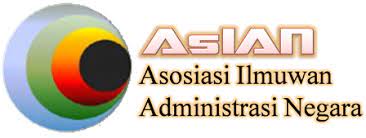Pemberdayaan Masyarakat melalui Menejemen Bank Sampah Berbasis Website
DOI:
https://doi.org/10.36085/jams.v4i3.7329Keywords:
Community, Empowerment , Website, Waste , Bank, ManagementAbstract
Kemumu Village was originally in the form of a village named Sido Mulya from the Dutch Colonization Transmigration Program in 1935 which came from Banyumas, and Kebumen, Central Java. In 2023 Kemumu won 2nd place in the Competition and in 2024 won first place at the Provincial level. With this achievement, of course, the Village assisted by related parties such as TP-PKK and POKDARWIS must strive to create tourist locations to be cleaner, more beautiful, neat and comfortable to visit. However, this effort is not balanced by the awareness of visitors in throwing garbage. Visitors still throw garbage carelessly at interesting tourist spots. This makes tourist locations unbeautiful. Kemumu as a biowealth-based ecotourism destination and agrotourism with tourist spots in swampy areas are filled with a lot of garbage. This causes pollution, the flow of water is obstructed. The 2018 DRTPM PKM program has succeeded in forming a waste artisan center and has succeeded in improving community skills in utilizing plastic waste into goods of economic value. However, along with the increase in knowledge, understanding and behavior of the community in utilizing plastic waste, it has an impact on the lack of plastic waste supply needed by craftsmen. Meanwhile, the people of Kemumu have the potential to produce plastic waste. Through PMP 2024, it tries to provide solutions on how to manage plastic waste in order to create a sustainable tourism village, and increase awareness in waste management, increase knowledge, waste management skills so that it can meet the needs of waste artisans and community income with socialization, training, technology application, mentoring, and evaluation methods. The results of PMP 2024 have been able to increase the knowledge, understanding and skills of partners in managing plastic waste so that waste artisans no longer have difficulty in obtaining raw materials. The Arga Tirta Waste Bank has been formed which is located in the Palak Siring Kemumu Field
References
Asteria, D., & Heruman, H. (2016). Asteria, D., & Heruman, H. (2016). Bank Sampah Sebagai Alternatif Strategi Pengelolaan Sampah Berbasis Masyarakat di Tasikmalaya. Jurnal Manusia Dan Lingkungan, 23(1), 8. Jurnal Manusia Dan Lingkungan, 23(1),
https://www.mendeley.com/catalogue/63ff0174-08af-31f7-9fc8-00817001c1d4/
Ayu, I., Erlina, H., & Sari, Y. M. (2023). Empowerment of Communication Parents and Educators to Success Program Play Groups. 05(04), 13622–13633. https://doi.org/10.31004/joe.v5i4.2373
Data Tempo. (2021). Satu Orang Indonesia Hasilkan 0,68 Kilogram Sampah Per Hari, Juga Sampah Plastik. Tempo.
Desy, R., Sugito, R., & Atmaja, T. H. W. (2018). Sampah Anorganik sebagai Ancaman di Kawasan Ekosistem Hutan Manggrove Kuala Langsa. Jurnal Jeumpa, 5(2), 84–90.
Dewi, A., Th, M., & Palupiningtyas., et al. (2024). Pendampingan Manajemen Dasar-Dasar Pariwisata Untuk Keberlanjutan Dan Pengembangan Produk Destinasi Wisata Assistance in Basic Tourism Management for Sustainability and Development of Tourism Destination Products Sekolah Tinggi Ilmu Ekonomi Pariwisata Ind. NUSANTARA: Jurnal Pengabdian Kepada Masyarakat, 4(3). https://doi.org/10.55606/nusantara.v4i3.3086
Dey, S., Veerendra, G. T. N., Babu, P. S. S. A., Manoj, A. V. P., & Nagarjuna, K. (2024). Degradation of Plastics Waste and Its Effects on Biological Ecosystems: A Scientific Analysis and Comprehensive Review. In Biomedical Materials and Devices (Vol. 2, Issue 1). Springer US. https://doi.org/10.1007/s44174-023-00085-w
Dominique Coy, Shirin Malekpour, A. K. S. (2023). Putting the power back in empowerment: Stakeholder perspectives on community empowerment in energy transformations. Enviorment Policy and Goverment, 33(5), 459–473. https://doi.org/10.1002/eet.2043
Donna Asteria & Heru Heruma. (2016). BANKSAMPAHSEBAGAI ALTERNATIF STRATEGI PENGELOLAAN SAMPAH BERBASIS MASYARAKAT DI TASIKMALAYA(Bank Sampah (Waste Banks)as an Alternative ofCommunity-Based Waste Management Strategy in Tasikmalay. 23(1), 136–141. https://doi.org/https://doi.org/10.22146/jml.18783
Ebekozien, A., Aigbavboa, C. O., Samsurijan, M. S., Aliu, J., & Nwaole, A. N. C. (2024). Mentorship as a tool for improving construction artisan’s skills to achieve sustainable development Goal 8 via qualitative approach. Engineering, Construction and Architectural Management, 31(13), 303–322. https://doi.org/10.1108/ECAM-07-2023-0655
Elyas, A. H., Iskandar, E., & Suardi, S. (2020). Inovasi Model Sosialisasi Peran serta Masyarakat Kecamatan Hamparan Perak dalam Pemilu. Warta Dharmawangsa, 14, 137–149.
http://jurnal.dharmawangsa.ac.id/index.php/juwarta/article/view/548
Fadlilah, N. I., Ardiansyah, A., Kuryanti, S. J., Bina, U., Informatika, S., & Mandiri, U. N. (2021). Sistem informasi pengelolaan bank sampah sampurna berkah berbasis website. 7(1), 78–85.
Febiola P. (2012). Menuai Berkah Dan Rupiah Dari Sampah Melalui Program Bank Sampah Melati Bersih Perigi Baru 1. 2012, 1–4. ttps://jurnal.umj.ac.id/index.php/semnaskat/article/view/10744%0Ahttps://jurnal.umj.ac.id/index.php/semnaskat/article/download/10744/6052
Hemlata Sharma, D. K. N. (2023). Understanding challenges associated with plastic and bacterial approach toward plastic degradation. Journal of Basic Microbiloogy, 63(3–4), 292–307. https://doi.org/https://doi.org/10.1002/jobm.202200428
Jaelani. (2021). Teori Organisasi. Yayasan Prima Agus Teknik.
Novianti, T., Anna, I. D., & Cahyadi, I. (2019). Optimization of bioplastic’s tensile strength. Journal of Physics: Conference Series, 1211(1). https://doi.org/10.1088/1742-6596/1211/1/012048
Rahmah, F. H. (2022). Aplikasi Bank Sampah Berkah Melimpah Berbasis Website pada Kelurahan Nanggewer 1 Pendahuluan JURNAL INFORMATIK Edisi ke-18 , Nomor 2 , Agustus 2022 2 Studi Literatur. 4221, 131–142. https://doi.org/https://doi.org/10.52958/iftk.v18i2.4641
Sari Eliana. (2006). Modul teori organisasi, Konsep dan Aplikasi, 2006 Jaya Banya University Pers, ISBN: 987-979-9302-25-0. Jaya Baya University Pers,.
Sheperis, C. J., & Bayles, B. (2022). Empowerment Evaluation: A Practical Strategy for Promoting Stakeholder Inclusion and Process Ownership. Counseling Outcome Research and Evaluation, 13(1), 12–21. https://doi.org/10.1080/21501378.2022.2025772
Siti, Hafsyah, Idris., at. a. (2024). Indonesia Paradox on Plastic Waste Import in International Policy and Social Movement Perspective. Indonesian Journal of Advocacy and Legal Services, 6(1)(https://doi.org/10.15294/ijals.v6i1.78522), 169–204.
Thompson, R., Moore, C., vom Saal, F., & Swan, S. (2009). Plastics, the environment and human health: Current consensus and future trends. Philosophical Transactions of the Royal Society of London. Series B, Biological Sciences, 364, 2153–2166. https://doi.org/10.1098/rstb.2009.0053
Tiwari, P., & Malati, N. (2023). Role of Training in Women Empowerment: An Empirical Analysis. Journal of Technical Education and Training, 15(1), 234–245. https://doi.org/10.30880/jtet.2023.15.01.020
Yuni Indah, S. H. (2018). Avoer X, Fakultas Teknik, Universitas Sriwijaya. Pembedayaan Ekonomi Produktif Melalui Pemanfaatan Sampah Plastik. https://scholar.google.com/citations?view_op=view_citation&hl=id&user=-TT-HMEAAAAJ&citation_for_view=-TT-HMEAAAAJ:MXK_kJrjxJIC





